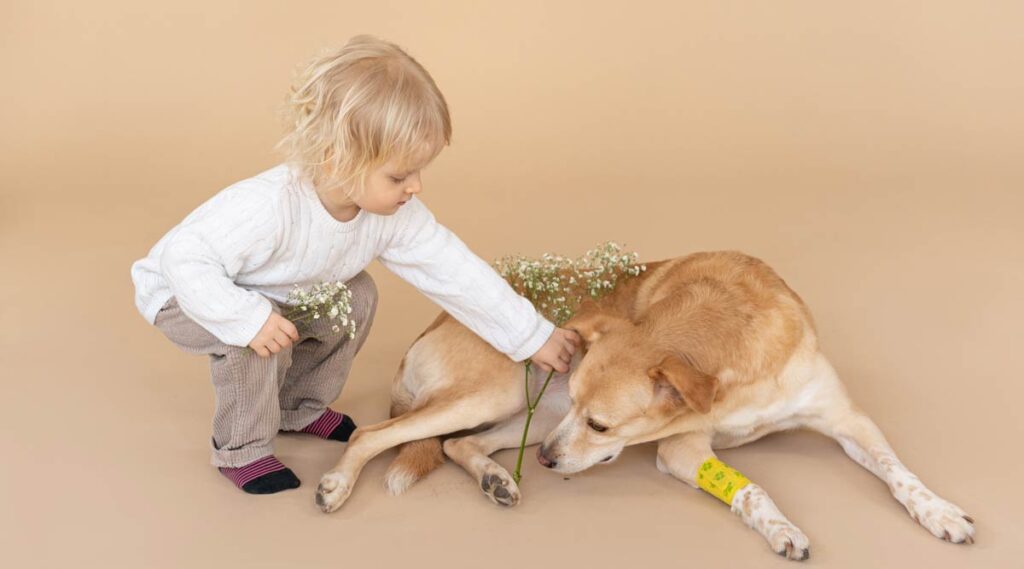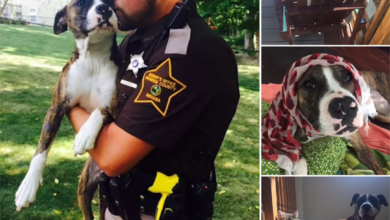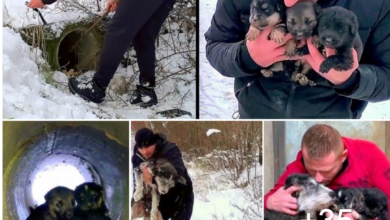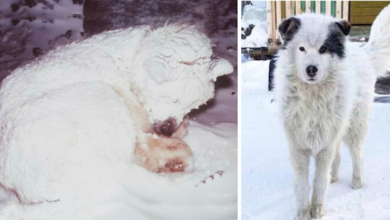
Understanding dog body language is crucial for any dog lover. Dogs communicate primarily through their body postures, facial expressions, and vocalizations. By learning to interpret these signals, you can better understand your furry companion’s emotions, needs, and intentions.
In this comprehensive guide, we will explore the intricacies of dog body language and provide valuable insights into how you can effectively communicate with your canine friend. Whether you’re a new dog owner or an experienced enthusiast, this guide will equip you with the knowledge and tools to decipher the subtle cues that dogs use to express themselves.
General
By honing your ability to understand dog body language, you can strengthen the bond between you and your pet, improve training sessions, and ensure their overall well-being. Additionally, being attuned to their body language allows you to identify potential signs of fear, anxiety, or aggression, enabling you to respond appropriately and create a safe and nurturing environment.
Join us on this journey to unravel the secrets of dog body language and deepen your connection with your canine companion. Let’s embark on a fascinating exploration of how to understand dog body language and unlock the hidden messages that our beloved dogs convey through their movements, expressions, and vocalizations.
- General
- Basics of Dog Body Language
- Interpreting Emotional States
- Communicating and Building a Strong Bond
- Social Interactions and Body Language
- Practical Tips for Understanding Dog Body Language
- Common Misconceptions and Myths
- Frequently Asked Questions
- Why is it important to understand dog body language?
- How can I recognize signs of fear and anxiety in dogs through their body language?
- What are some common misconceptions about dog body language?
- How can I establish trust and mutual understanding with my dog through non-verbal communication?
- Are there any specific training techniques that can help improve my understanding of dog body language?
- Conclusion
Basics of Dog Body Language

Visual Cues
Facial Expressions and Eye Movements
Dogs’ facial expressions and eye movements can provide valuable insights into their emotional state and intentions. A relaxed face with soft eyes indicates a calm and content dog, while wide eyes and a tense facial expression may indicate fear or anxiety. Squinting or averting eye contact can be signs of submission or discomfort.
Body Posture and Tail Positions
A dog’s body posture and tail position communicate a wealth of information. A confident and relaxed dog stands tall with a loosely wagging tail. On the other hand, a lowered or tucked tail may indicate fear or submission. A stiff and erect body posture can signal alertness or aggression, while a lowered body posture suggests submissiveness.
Ear Positions and Mouth Expressions
Dogs use their ears and mouths to express themselves. Erect, forward-facing ears indicate attentiveness and curiosity, while flattened or backward-facing ears can indicate fear or anxiety. A closed mouth with relaxed lips signifies a calm and content dog, while bared teeth or a snarl indicate aggression or a warning.
Vocalizations
Barking
Barking is a primary vocalization for dogs, and different types of barks convey different messages. A sharp and short bark may signal alertness or warning, while a continuous and high-pitched bark can indicate excitement or frustration. Low and deep barks often convey a sense of threat or assertiveness.
Whining and Growling
Whining is a common vocalization used by dogs to communicate various needs or emotions, such as anxiety, discomfort, or seeking attention. Growling, on the other hand, is a warning sign of potential aggression or discomfort. It’s essential to pay attention to the context and another accompanying body language when interpreting whining or growling.
Understanding Other Vocal Signals
Apart from barks, whines, and growls, dogs use a range of vocal signals to express themselves. These include yelps, howls, grunts, and even various pitches and tones. Each vocalization has its own meaning and may vary depending on the situation and individual dog.
Interpreting Emotional States

Understanding the emotional states of dogs is crucial for building a strong bond and providing appropriate care. In this section, we will explore how to interpret different emotional states displayed by dogs.
Fear and Anxiety
Fear and anxiety are common emotions experienced by dogs, and it’s essential to recognize the signs to help them feel safe and secure. Some indicators of fear and anxiety include trembling or shaking, tucked tail, lowered body posture, ears pinned back, panting, and excessive drooling. Dogs may also exhibit avoidance behaviors, such as trying to hide or retreat.
Aggression and Stress
Aggression in dogs can stem from various triggers, including fear, resource guarding, or territorial behavior. It’s crucial to recognize the early warning signs to prevent potential aggression. These signs may include raised hackles, stiff body posture, direct eye contact, growling, snarling, and snapping. Stress signals, such as lip licking, yawning, and pacing, can also indicate discomfort or unease.
Playfulness and Happiness
Observing and understanding when your dog is feeling playful and happy is equally important. Playfulness is often characterized by a relaxed body posture, loose and wagging tail, and bouncy movements. Dogs may initiate play by bowing down, offering play bows, or engaging in playful vocalizations, such as barking or “zoomies.” Happy dogs often exhibit bright and relaxed eyes, a relaxed mouth, and an overall cheerful demeanor.
Communicating and Building a Strong Bond

Effective communication and building a strong bond with your dog are essential for a harmonious and fulfilling relationship. In this section, we will further explore the importance of non-verbal communication, establishing trust and mutual understanding, and positive reinforcement training techniques.
Importance of Non-verbal Communication
Non-verbal communication plays a crucial role in understanding and connecting with your dog. Dogs rely heavily on body language, facial expressions, and vocalizations to express themselves. By observing and interpreting these non-verbal cues, you can better understand your dog’s emotions, needs, and intentions. Pay attention to subtle signals such as tail-wagging speed, ear positions, and eye contact. Responding appropriately to your dog’s non-verbal communication can strengthen the bond and promote effective interaction.
Establishing Trust and Mutual Understanding
Trust is the foundation of any successful relationship, including the one with your dog. Building trust involves consistency, empathy, and clear communication. Be reliable in meeting your dog’s basic needs for food, water, exercise, and affection. Set clear boundaries and enforce them consistently, providing a sense of security for your dog. Use positive reinforcement to reward good behavior and avoid using harsh punishments that can damage trust. Spend quality time together, engaging in activities that your dog enjoys, such as playtime, walks, and training sessions. By nurturing a trusting and respectful relationship, you can establish a strong bond and open lines of communication.
Positive Reinforcement Training Techniques
Positive reinforcement is a highly effective and humane training method that focuses on rewarding desired behaviors. By rewarding your dog for performing the behavior you want, you reinforce and encourage them to repeat that behavior. Here are some key principles of positive reinforcement training techniques:
Rewards and Treats
Identify treats or rewards that your dog finds motivating. Use these rewards to reinforce desired behaviors, such as sitting, lying down, or coming when called. Remember to use rewards consistently and vary them to maintain your dog’s interest. Gradually reduce the frequency of treats as your dog becomes more consistent in their responses.
Clicker Training
Clicker training is a popular positive reinforcement technique that utilizes a clicker device to mark desired behaviors. The clicker sound is paired with a treat, providing a clear signal to your dog that they have performed the behavior correctly. Clicker training helps to bridge the communication gap between you and your dog, making the training process more efficient and effective.
Consistency and Patience
Consistency and patience are key when using positive reinforcement techniques. Clearly communicate your expectations and be consistent in your training methods. Break down complex behaviors into smaller, manageable steps, rewarding and reinforcing each step. Stay patient and avoid becoming frustrated, as dogs respond best to calm and positive reinforcement.
Social Interactions and Body Language

Reading Dog Signals during Interactions with Humans
Understanding dog body language is crucial not only when interacting with other dogs but also during interactions with humans. Dogs use various signals to communicate their feelings and intentions. Pay attention to signs such as tail wagging, body posture, facial expressions, and vocalizations. Tail wagging can indicate happiness, but it can also signal anxiety or caution depending on the speed and height. Understanding these signals can help you gauge your dog’s comfort level and respond appropriately, ensuring positive and safe interactions.
Interactions with Other Dogs: Canine Communication Signals
When dogs interact with each other, they rely heavily on body language to communicate. Familiarizing yourself with common canine communication signals can help you understand their social dynamics and avoid potential conflicts. These signals include tail positions, play bows, ear positions, growls, and other postures. Learning to interpret and respond to these signals can enhance your dog’s social experiences and prevent misunderstandings or aggressive encounters.
Recognizing Dominance and Submissive Behaviors
Within social interactions, dogs may exhibit dominant or submissive behaviors. Dominant behaviors include standing tall, direct eye contact, and assertive body language, while submissive behaviors involve lowered posture, avoiding eye contact, and turning their body away. Recognizing these behaviors can help you manage social situations and promote harmonious interactions between dogs.
Practical Tips for Understanding Dog Body Language

Creating a Safe and Enriching Environment
One of the most important aspects of understanding dog body language is ensuring that your dog feels safe and secure in their environment. Create a dedicated space for them where they can relax and have their own comfortable bed or crate. This provides them with a sense of security and a place to retreat when they need some alone time.
Additionally, offer mental and physical stimulation through interactive toys, puzzle games, and regular exercise. These activities not only keep your dog physically healthy but also mentally stimulated, promoting better communication and reducing the likelihood of behavioral issues.
Reducing Stress Triggers
Identifying and minimizing stress triggers in your dog’s environment is crucial for their overall well-being and effective communication. Common stressors can include loud noises, such as thunderstorms or fireworks, unfamiliar surroundings, or excessive handling. Observe your dog’s reactions to these triggers and take steps to gradually desensitize them.
For example, if your dog is scared of thunderstorms, create a safe space for them during a storm and play soothing music to help drown out the noise. Use positive reinforcement techniques, such as treats and praise, to create positive associations with these triggers and reduce anxiety over time.
By minimizing stress triggers, you create an environment where your dog can feel more comfortable and communicate more effectively.
Providing Proper Socialization and Training
Socialization and training are essential for dogs to develop good communication skills. Expose your dog to various environments, people, and other animals from a young age, ensuring positive and controlled experiences. This exposure helps them become familiar with different stimuli and teaches them how to interact appropriately.
Additionally, obedience training and impulse control exercises establish clear communication between you and your dog. Basic commands, such as “sit,” “stay,” and “come,” create a common language that enhances your ability to communicate effectively.
Positive reinforcement training techniques, such as rewarding good behavior with treats and praise, are highly effective in building trust and reinforcing desired behaviors. By providing proper socialization and training, you equip your dog with the necessary skills to navigate social interactions and communicate their needs and intentions more clearly.
Common Misconceptions and Myths

Debunking Misconceptions about Dog Body Language
There are several misconceptions surrounding dog body language that can lead to misunderstandings and misinterpretations. Addressing these misconceptions is crucial for developing a more accurate understanding of dog behavior. Some common misconceptions include the belief that a wagging tail always indicates friendliness or that a dog showing teeth is always aggressive. Educating ourselves and others about these misconceptions helps promote responsible pet ownership and safer interactions.
Addressing Popular Myths and Misunderstandings
In addition to misconceptions about body language, there are also popular myths and misunderstandings about dog behavior in general. These can include ideas about alpha dominance, the “guilty” look, or certain breed stereotypes. By addressing these myths and providing accurate information, we can promote a better understanding of dogs and their behavior.
Frequently Asked Questions
Why is it important to understand dog body language?
Understanding dog body language is crucial for effective communication and building a strong bond with your furry companion. It helps you interpret their emotions, needs, and intentions, leading to better interactions and a safer environment for both you and your dog.
How can I recognize signs of fear and anxiety in dogs through their body language?
Dogs display various body language cues when they’re feeling fearful or anxious. These signs can include trembling, lowered body posture, tucked tail, ears pulled back, and avoidance behaviors. By learning to recognize these cues, you can respond appropriately and help alleviate their stress.
What are some common misconceptions about dog body language?
One common misconception is that a wagging tail always indicates a happy dog. In reality, a wagging tail can signify various emotions, including fear or aggression. It’s essential to consider the overall body language and context to accurately interpret a dog’s emotional state.
How can I establish trust and mutual understanding with my dog through non-verbal communication?
Non-verbal communication, such as using consistent body language and facial expressions, can help establish trust and mutual understanding with your dog. By maintaining a calm and relaxed demeanor, using positive reinforcement techniques, and respecting their boundaries, you can foster a strong bond built on trust and effective communication.
Are there any specific training techniques that can help improve my understanding of dog body language?
Positive reinforcement training techniques, such as reward-based training, can be highly effective in improving your understanding of dog body language. By rewarding desired behaviors and using consistent cues, you can reinforce positive communication and strengthen the bond between you and your dog.
Conclusion
In conclusion, developing a deep understanding of dog body language is essential for fostering a strong bond and effective communication with our canine companions. By paying close attention to their non-verbal cues, such as facial expressions, body posture, and vocalizations, we can gain insights into their emotions, needs, and intentions. This knowledge enables us to respond appropriately, provide a safe and enriching environment, and address any potential behavioral issues.
To continue enhancing your understanding of dog body language, I encourage you to actively observe and engage with your own dog. Each dog is unique, and by spending quality time together, you will become more attuned to their individual signals and communication style. Additionally, there are numerous resources available, such as books, articles, and online courses, that delve deeper into this fascinating subject. By furthering your knowledge and seeking professional guidance if needed, you can strengthen your bond with your furry friend and create a harmonious and fulfilling relationship.
Remember, effective communication is a two-way street. Just as we strive to understand our dogs, we must also ensure that our own body language and verbal cues are clear and consistent. Building trust and mutual understanding takes time and patience, but the rewards are immeasurable. So, commit to being an attentive and empathetic pet parent, and embark on this journey of understanding dog body language. Your dog will thank you with unwavering loyalty, love, and a stronger connection that will last a lifetime.
Read more:


















































